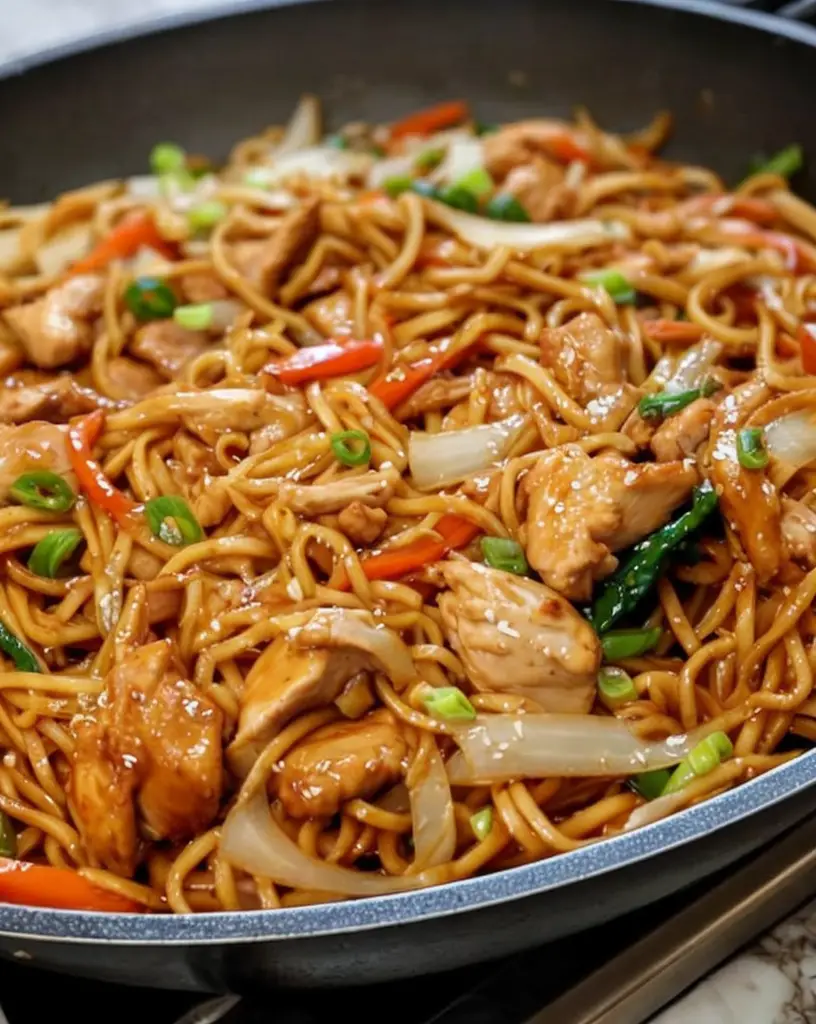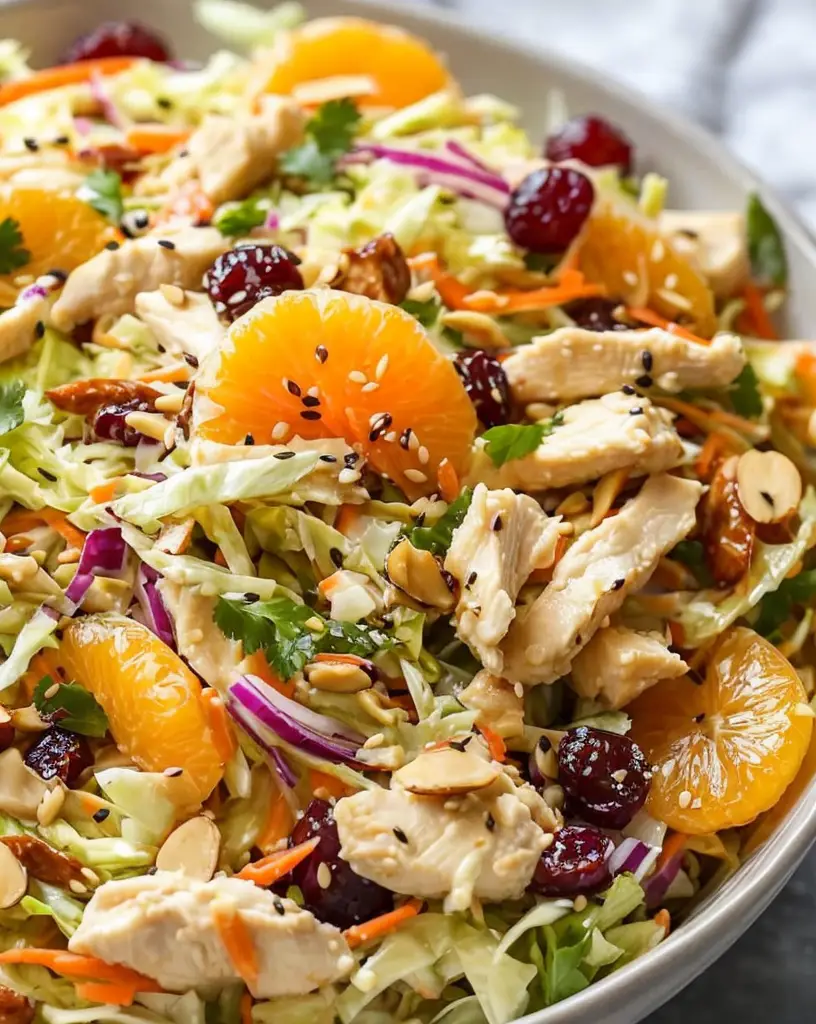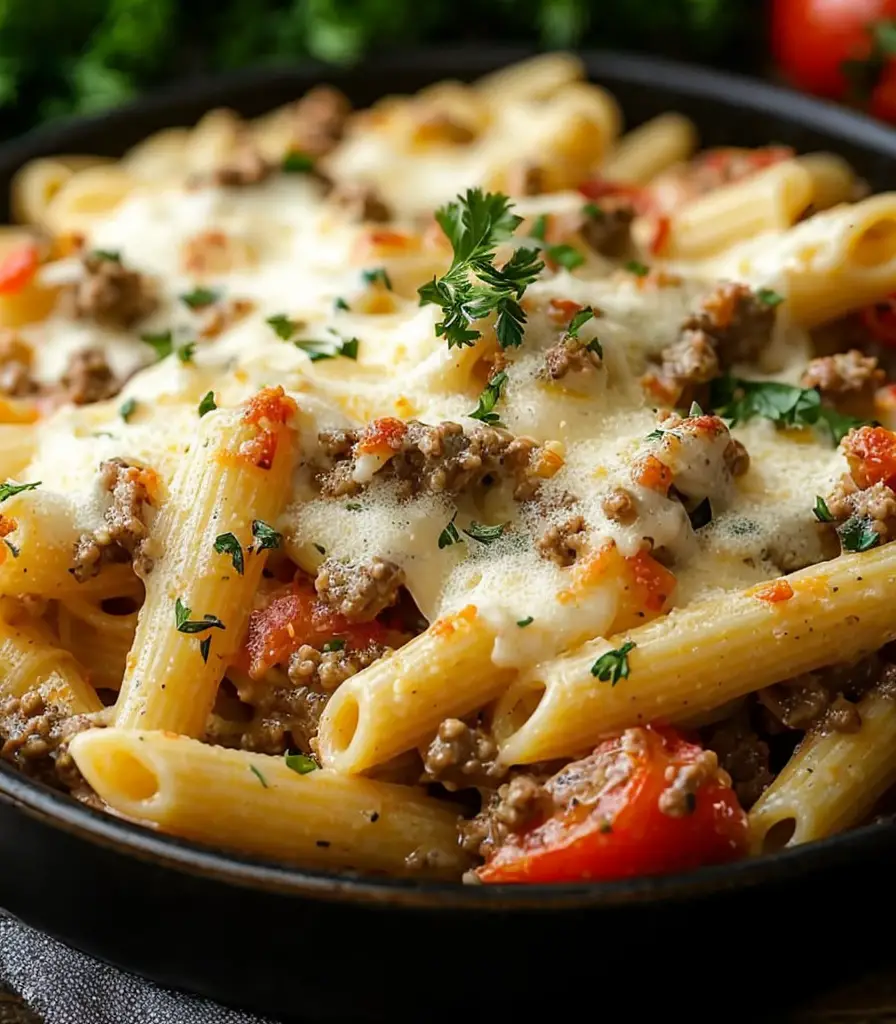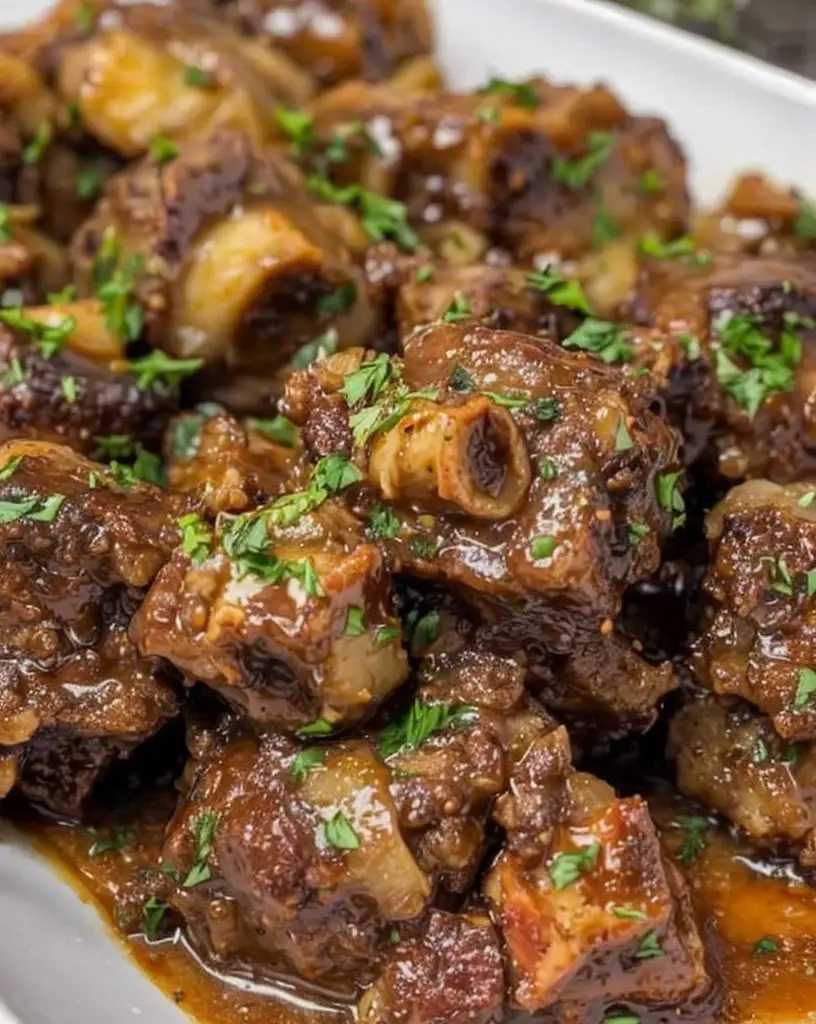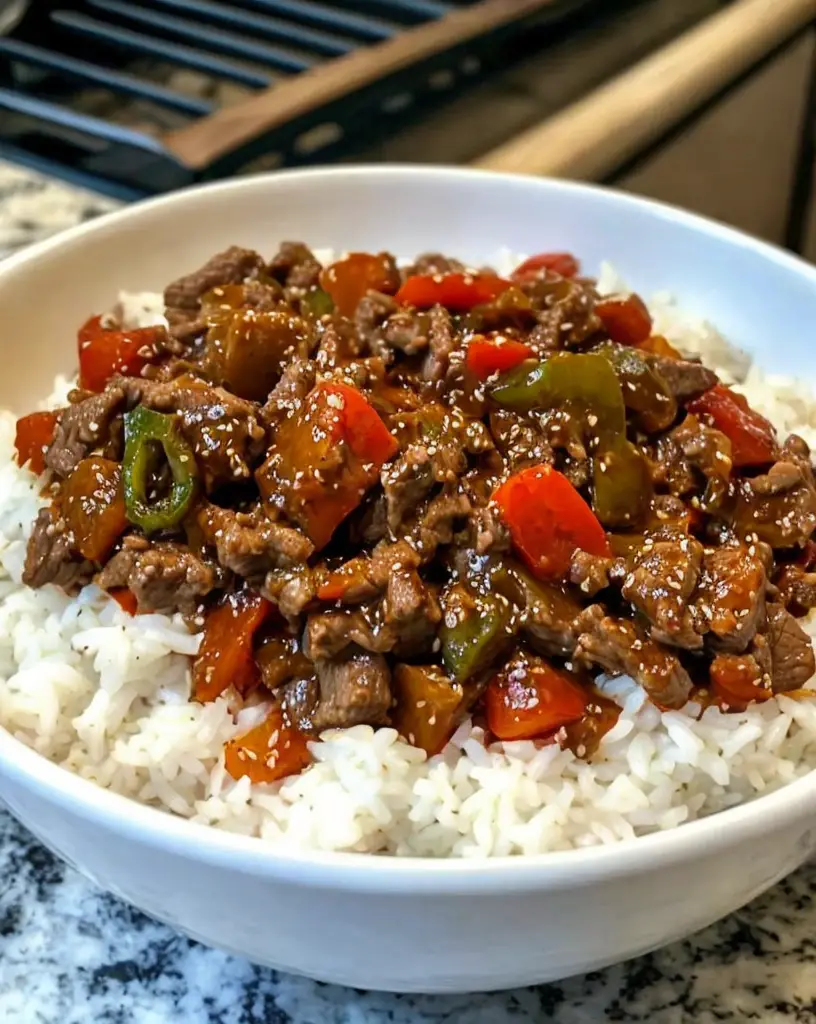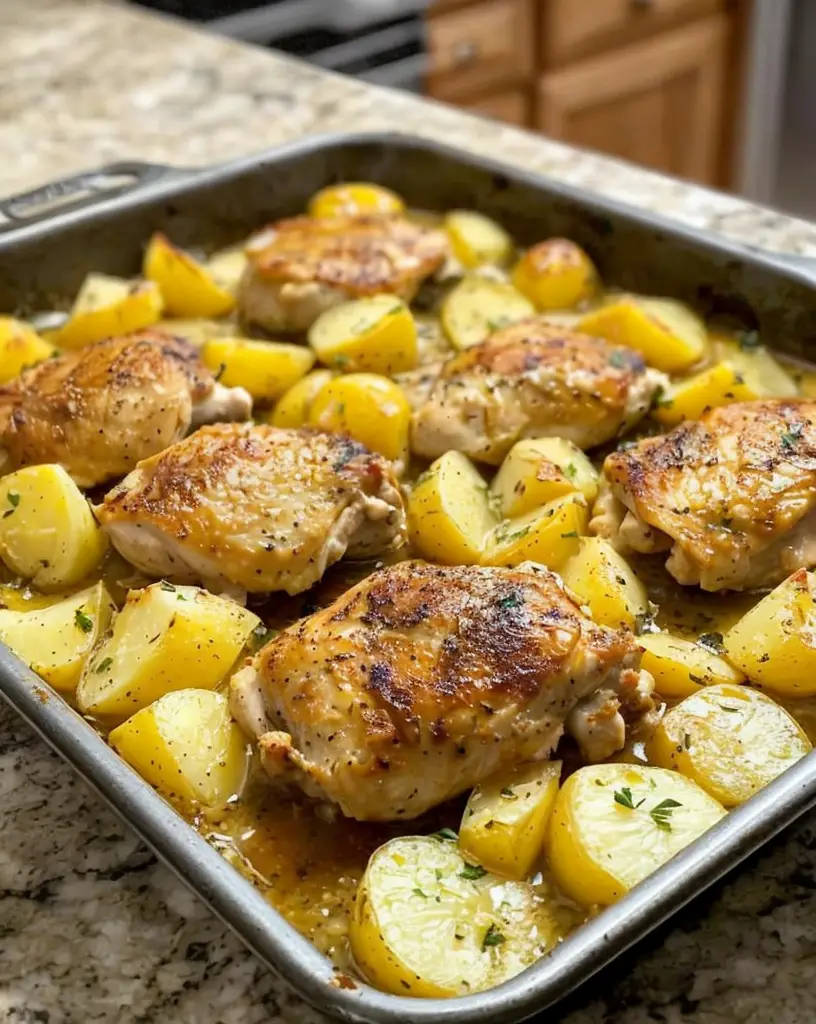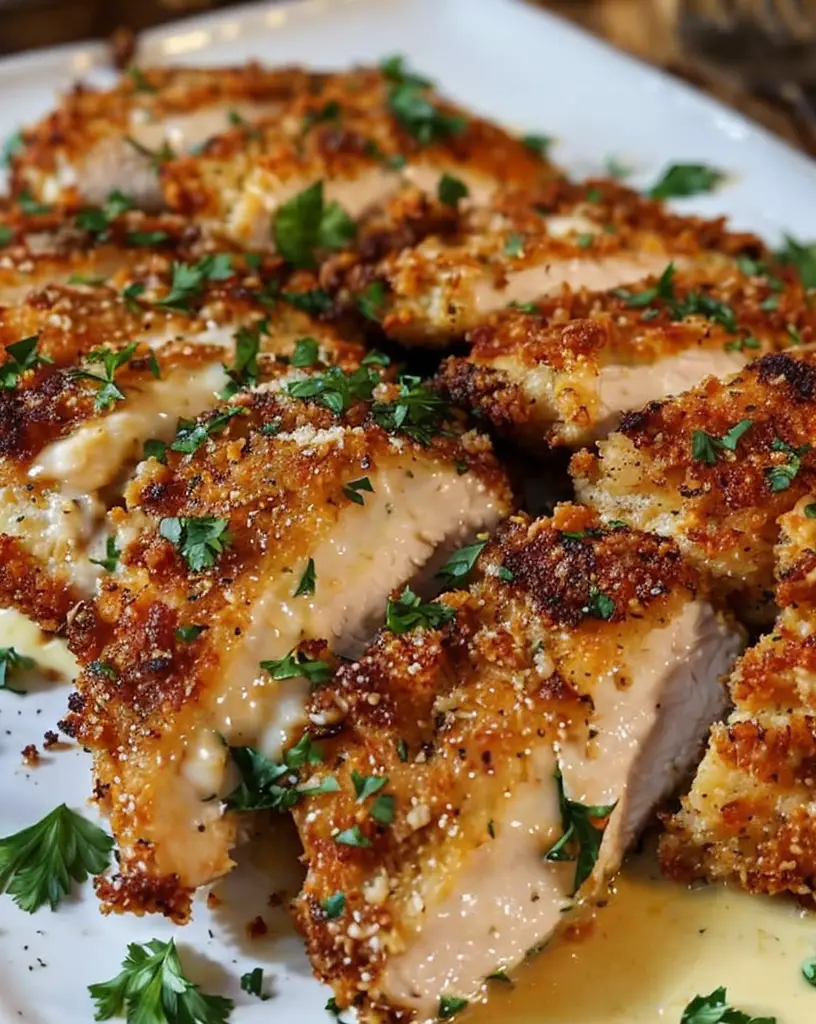Delicious Chicken Lo Mein: A Taste of Comfort
Discover the joy of homemade Chicken Lo Mein, a classic dish that combines tender chicken, vibrant vegetables, and perfectly cooked noodles all tossed in a rich, savory sauce. This meal epitomizes comfort and is a staple in many households for good reason. The combination of flavors and textures creates a satisfying balance that keeps you coming back for more. Perfectly suited for any weekday dinner, this dish not only fills your belly but also warms your heart.
Creating Chicken Lo Mein at home is an incredibly rewarding experience. The aroma of garlic, ginger, and sautéed vegetables fills the kitchen, awakening your senses and drawing everyone to the table. Each bite reveals the delightful interplay of the chewy noodles, tender vegetables, and juicy pieces of chicken, all brilliantly coated in a delicious stir-fry sauce. Whether it’s a family dinner or a special gathering, this Chicken Lo Mein will always impress.
Quick Recipe Highlights
- Flavor Profile: Chicken Lo Mein boasts a savory blend of soy sauce, sesame oil, and ginger that creates a mouthwatering taste.
- Texture: The dish features a wonderful combination of tender chicken, crisp vegetables, and soft yet slightly chewy noodles that dance on your palate.
- Aroma: Expect a rich, comforting aroma dominated by garlic and ginger, blending beautifully with the essence of sautéed vegetables.
- Visual Appeal: The vibrant colors of bell peppers, carrots, and green onions against the golden noodles make this dish as beautiful as it is delicious.
- Skill Level Needed: This dish is suitable for cooks of all skill levels, making it perfect for both novice and experienced home chefs.
- Special Equipment: All you need is a large skillet or wok for optimal cooking and flavor infusion.
Recipe Overview
- Difficulty Level: This Chicken Lo Mein recipe is categorized as easy, making it accessible for anyone looking to whip up a delicious meal quickly.
- Category: This dish is perfect for main courses and Asian cuisine nights, ideal for family dinners and casual gatherings.
- Cuisine: Chicken Lo Mein hails from Chinese culinary traditions, known for their vibrant stir-fried dishes that emphasize fresh ingredients and bold flavors.
- Cost: The average cost of ingredients is budget-friendly, making this recipe an economical choice for feeding a family.
- Season: This comforting dish is fantastic all year round, but it shines particularly in colder months when hearty meals are desired.
- Occasion: Whether it’s a weeknight dinner or a potluck, this Chicken Lo Mein meets the occasion beautifully.
Why You’ll Love This Recipe
The delightful taste and texture of Chicken Lo Mein make it an irresistible option for dinner. With a rich combination of savory flavors and a satisfying blend of vegetables and proteins, each bite transports you to a cozy Chinese restaurant. This dish is a perfect way to enjoy authentic tastes right at home without sacrificing quality or flavor.
Convenience is key in today’s fast-paced world, and this Chicken Lo Mein recipe fits perfectly into that lifestyle. Quick to prepare and cook, you can have a delicious meal ready in just 30 minutes. Plus, it’s a great opportunity to use up leftover vegetables you have on hand, creating a customized dish that suits your preferences while minimizing waste.
Nutritionally, this recipe offers a balanced meal featuring lean protein from chicken, vitamins from colorful vegetables, and carbohydrates from the noodles. It provides a wholesome option that supports a healthy diet without compromising on taste. You’re feeding your body and satisfying your taste buds at the same time.
Gathering around food brings people together, and Chicken Lo Mein is perfect for social occasions. The vibrant colors and enticing aroma of this dish are sure to impress guests, making it an excellent option for entertaining. Serve with crispy spring rolls or fortune cookies to elevate the dining experience.
Lastly, the cost-effectiveness of this dish cannot be overstated. With affordable ingredients and easy preparation, you can feed a family of four without breaking the bank. It’s an excellent go-to recipe that proves deliciousness doesn’t need to come with a hefty price tag.
Historical Background and Cultural Significance
The origins of Chicken Lo Mein can be traced back to China, where noodles have been a staple for centuries. The name “Lo Mein” translates to “stirred noodles,” reflecting the cooking method used to prepare this vibrant dish. The dish gained popularity in Western cuisine as Chinese immigrants introduced it, adapting to local tastes while maintaining essential flavors.
Culturally, Chicken Lo Mein signifies comfort food in many Chinese households, similar to how macaroni and cheese is viewed in Western cultures. It embodies the essence of family meals, often served during gatherings and festivals, representing unity and togetherness. The dish has transcended its origins, becoming a beloved choice for people around the globe who enjoy Asian cuisine.
Over the years, the recipe has evolved with different regions of China adding their unique twists. These variations might include different types of proteins such as shrimp or beef, as well as a diverse array of vegetables. This flexibility has allowed Chicken Lo Mein to adapt to local tastes, making it a versatile and enduring dish.
Regional variations also showcase the diverse culinary traditions within China. For instance, Hong Kong-style Chicken Lo Mein may include richer sauces and different noodles, highlighting the locality’s flair. Similarly, Americanized versions frequently feature added ingredients like broccoli, making it more appealing to wider audiences.
Ingredient Deep Dive
Chicken: Chicken is the star ingredient of this dish. It holds cultural significance as a symbol of prosperity and festivity in Chinese culture. When selecting chicken for your Lo Mein, look for fresh, boneless options. Nutritionally, chicken is a lean source of protein that supports muscle growth and overall health. Store raw chicken in the refrigerator and use it within a couple of days or freeze it for extended use. As a substitution, tofu or tempeh can be used for a plant-based alternative.
Noodles: Lo Mein noodles are typically made from wheat flour and egg, giving them a delightful texture. Noodles have a rich history in Asian cuisine, symbolizing longevity. When choosing noodles, opt for fresh varieties if available; they provide the best texture when cooked. Nutritionally, noodles provide carbohydrates for energy. Store them in a cool, dry place, and they can last for months. For gluten-free options, consider using rice noodles or zucchini noodles as a substitute.
Vegetables: Fresh vegetables like bell peppers, carrots, and bok choy add color, texture, and essential nutrients to Chicken Lo Mein. Vegetables symbolize abundance in Chinese culture and are integral to a balanced meal. For the best flavor and nutrition, choose vibrant, fresh produce. Store vegetables in the refrigerator for longevity while ensuring they are used within a week to maintain freshness. If you’re missing some vegetables, feel free to customize the mix; broccoli or snap peas can be fantastic additions.
Soy Sauce: Soy sauce is the backbone of flavor in this dish, contributing saltiness and umami. Its history stretches back thousands of years in Asian cuisine, where it was developed as a means of preserving food. When selecting soy sauce, opt for low-sodium varieties to reduce salt intake without sacrificing flavor. Nutritionally, soy sauce contains antioxidants and flavor-enhancing amino acids. Store it in a cool, dark place; it lasts quite a long time due to its high salt content. Tamari is a suitable gluten-free alternative that can be used in its place.
Common Mistakes to Avoid
- Overcooking the Noodles: This is a common mistake that leads to mushy noodles. Always check the packaging for the recommended cooking time and do not exceed it.
- Using Stale Ingredients: Using old vegetables or expired sauce can ruin the dish. Always check the freshness of produce and expiration dates before cooking.
- Skipping the Marination: Failing to marinate the chicken can lead to bland flavor. A simple marinade can enhance the dish significantly.
- Not Preparing Ahead: Ensure all ingredients are prepped before cooking, as stir-frying goes quickly, and you won’t have time to chop later.
- Too Much Sauce: Adding too much soy sauce can result in an overly salty dish. Start with a small amount and adjust to taste.
- Underestimating Heat: Cooking on low heat will not give the desired stir-fry effect. Ensure your pan is hot enough before adding ingredients.
- Crowding the Pan: Cooking too much at once can cause steaming rather than frying. Cook in batches for the best texture.
- Skipping the Oil: Not using enough oil can lead to sticking. A little oil goes a long way in achieving the perfect stir-fry.
- Neglecting to Taste: Always taste your food before serving. Adjustments made during cooking can save a bland dish.
- Piling Too High: When plating, avoid stacking food too high as it may not look appealing. Presentation matters!
Essential Techniques
Stir-Frying: This technique is vital for this recipe, as it creates a quick, high-heat environment that helps to seal in flavors and textures. To master stir-frying, ensure your pan is hot enough before adding any ingredients. A common pitfall is overcrowding the pan, which can cause steaming rather than frying. Visual cues for success include seeing slight browning on your ingredients.
Marination: Marinating chicken prior to cooking enhances flavor and tenderness. To do this, combine soy sauce, garlic, and ginger and let it sit for at least 20 minutes. The key is allowing enough time for the flavors to penetrate the chicken adequately. A common mistake is marinating for too long, which can lead to an overly salty result.
Chopping Vegetables: Properly chopping vegetables ensures even cooking and a pleasing presentation. Always aim for uniformity in size, as this creates a consistent cooking time. A common issue arises when using dull knives—it’s safer and more efficient to use a sharp blade. Look for vibrant colors and a crisp texture as indicators of fresh vegetables.
Prepping Ahead: Preparing all your ingredients before you begin cooking is crucial in stir-frying. This allows for a fluid cooking process without interruptions. Keep your ingredients organized and in bowls to ensure you can move quickly. Forgetting to prep can lead to overcooked ingredients or delays in service.
Pro Tips for Perfect Chicken Lo Mein
One key tip for perfect Chicken Lo Mein is to use a mix of fresh vegetables to enhance both flavor and nutrition. Bell peppers, bok choy, and snap peas can create a colorful and nutritious blend.
Ensure you allow the noodles to cook just until al dente, as they will continue to cook when tossed with the hot chicken and vegetables. This prevents overcooking and maintains a pleasant texture.
Experiment with marinades for added flavor depth; sesame oil, garlic, and ginger can elevate your chicken’s taste profile significantly.
Add a splash of rice wine or sherry to the cooking process to introduce a new layer of depth in flavor.
For a spicier kick, consider adding chili flakes or fresh sliced chilies during cooking, adjusting to your heat preference.
Opt for high-quality soy sauce, as it dramatically affects the dish’s overall taste. Opt for low-sodium varieties if you’re watching your salt intake.
Finish with freshly chopped green onions or sesame seeds before serving for an aromatic and visually appealing touch.
Using cornstarch to coat your chicken before cooking will help it achieve that wonderful crispy texture.
Variations and Adaptations
Chicken Lo Mein is wonderfully adaptable, allowing you to switch up proteins including shrimp, beef, or tofu for a vegetarian version.
Seasonal adaptations can introduce ingredients like asparagus in spring or pumpkin in the fall, ensuring you make the most of what’s fresh.
For dietary modifications, consider using gluten-free noodles and a gluten-free soy sauce alternative for those with dietary restrictions.
Flavor variations could include adding oyster sauce or hoisin sauce to deepen the dish’s savory notes and offer a different taste experience.
Experimenting with texture modifications can elevate the dish; adding crushed peanuts on top can add crunch, while cabbage can contribute a great mouthfeel.
In terms of presentation alternatives, serving in individual bowls topped with fresh herbs or placing them on a colorful platter can make the dish stand out during gatherings.
Serving and Presentation Guide
When plating Chicken Lo Mein, consider using a large, shallow bowl to showcase the vibrant colors of the dish.
Garnishing with fresh cilantro or sliced green onions just before serving can add a splash of color and brightness to the dish.
Traditional accompaniments include spring rolls or dumplings, making for a complete and satisfying meal.
Modern serving suggestions might involve generating a family-style presentation, allowing guests to serve themselves, which encourages community.
Temperature considerations are essential, as this dish is best enjoyed fresh and hot from the skillet.
Portion control tips include offering smaller servings initially, allowing for guests who may want seconds to not overindulge at first.
Wine and Beverage Pairing
For wine pairings, consider a lightly chilled Riesling or Pinot Noir, both of which complement the flavors of Chicken Lo Mein beautifully without overpowering them.
If you’re looking for non-alcoholic alternatives, iced tea with lemon or ginger ale can provide a refreshing contrast to the savory dish.
Coffee or tea pairings are less common with Asian cuisine, but a green tea can enhance the meal, acting as a soothing digestif afterward.
When serving beverages, ensure they are well-chilled to enhance the dining experience, especially with summer gatherings.
Consider serving wines in larger glasses to allow for the aromas to fully develop, enhancing the overall tasting experience.
Storage and Shelf Life
To store Chicken Lo Mein, place it in an airtight container in the refrigerator to keep it fresh, where it can last for 3-4 days.
For best longevity, consume the dish within a day or two for optimal flavor and texture, particularly with the noodles.
Signs of spoilage may include off-smells or discoloration, which indicates it’s time to discard the dish.
When reheating, do so gently on the stove or in the microwave, ensuring it reaches the proper temperature of 165°F to kill any harmful bacteria.
If planning to freeze, separate the ingredients as noodles can become mushy upon thawing; ideally, store the chicken and sauce separately from the noodles.
Make Ahead Strategies
To prep Chicken Lo Mein ahead of time, chop vegetables and marinate chicken the night before. Store them separately in the fridge to ensure freshness.
Setting a prep timeline ensures everything is ready when you need it, making the cooking process swift. Aim for all ingredients to be prepped an hour before cooking.
Store components in clear containers or bags to easily see what’s inside and avoid losing ingredients between steps.
Quality is not compromised when ingredients are prepped ahead, as long as they are stored correctly and consumed within a reasonable timeframe.
Assembling the dish is fast once components are prepped. Just stir-fry in quick succession for a seamless cooking experience.
Consider slicing any fresh herbs or garnishes last minute to add freshness as you serve, enhancing the final appearance of your dish.
Scaling Instructions
When halving the Chicken Lo Mein recipe, maintain the ratio of the ingredients to ensure the balance of flavor remains the same while adjusting cooking times slightly.
Doubling or tripling the recipe is straightforward, but make sure to use a larger pan or wok to maintain proper cooking temperatures.
Equipment adjustments may be necessary when scaling; ensure you have enough storage containers or cooking vessels.
Timing modifications become essential as larger amounts can require slightly longer cooking times and additional attention when stirring.
Be mindful of storage considerations; larger quantities will require more space in your refrigerator or freezer.
Nutritional Deep Dive
A macro breakdown of Chicken Lo Mein reveals a healthy balance of carbohydrates, protein, and fats that make it a satisfying meal choice.
Micronutrient analysis shows the inclusion of vitamins A and C from vegetables, while chicken provides essential B vitamins necessary for energy production.
Health benefits include increased protein intake promoting muscle health and vitality, alongside nutrient-dense vegetables contributing to overall dietary needs.
Dietary considerations should reflect personal health goals; for instance, adjust ingredient choices for lower sodium or added fiber content.
Portion analysis emphasizes that moderation is vital; enjoying this dish paired with fresh greens can round out meals nicely.
Weight management tips suggest serving smaller portions to enjoy its deliciousness without overindulging, particularly with rich dishes like this.
Dietary Adaptations
For gluten-free adaptations, use rice noodles and a gluten-free soy sauce alternative to enjoy Chicken Lo Mein without gluten.
Dairy-free modifications are inherently easy as this recipe contains no dairy; simply stick to the core ingredients for a delightful meal.
Vegan alternatives can involve substituting chicken with tofu or tempeh while enhancing with more vegetables for protein and flavor.
Low-carb adaptations could entail using zucchini noodles in place of traditional noodles, making it suitable for keto diets.
Paleo enthusiasts can enjoy this dish with the same adapted noodles and a focus on fresh ingredients that adhere to paleo guidelines.
Low-FODMAP options are available by avoiding garlic and onion and selecting specific vegetables that suit dietary requirements.
Troubleshooting Guide
If you encounter texture issues with the noodles, ensure they are cooked al dente initially to prevent them from becoming too soft during stir-frying.
For flavor balance, taste as you cook, adjusting soy sauce and seasoning to avoid over-salting or under-seasoning your dish.
Temperature problems can occur if your stove isn’t hot enough; preheat your pan adequately to ensure a good sear on your ingredients.
If you face equipment challenges, such as limited kitchen tools, consider cooking in smaller batches which allows for optimal cooking conditions.
With ingredient substitutions, understanding the flavors and textures of alternatives is key to maintaining the integrity of the dish.
Timing concerns can be managed by having all ingredients prepped beforehand, allowing for a seamless cooking process when everything is ready to go.
Recipe Success Stories
Community feedback often highlights the wonderful combinations of texture and flavor that Chicken Lo Mein offers, with readers sharing their unique adaptations.
Success stories frequently mention the quick preparation timing as a game-changer for busy families seeking fast yet delicious meals.
Adaptive variations shared by readers, like changing protein sources or adding seasonal vegetables, show the flexibility of this recipe.
Photography tips from enthusiasts suggest highlighting vibrant colors and fresh ingredients to make your Chicken Lo Mein look as good as it tastes.
Readers often suggest serving Chicken Lo Mein family-style to engage diners, fostering a communal dining experience that enhances enjoyment.
Frequently Asked Questions
A: Yes, frozen vegetables can be used for convenience, but fresh vegetables provide a better texture and flavor. Look for blends that include bell peppers, peas, and carrots for the best results.
Q: What noodles are best for Chicken Lo Mein?
A: Traditional egg noodles work best, but for gluten-free versions, rice noodles are an excellent alternative. Choose the noodle type based on your dietary needs and preferences.
Q: Can I make Chicken Lo Mein ahead of time?
A: While it’s best enjoyed fresh, you can prep ingredients ahead and store them separately. Cooked Chicken Lo Mein can last in the fridge for 3-4 days.
Q: Is Chicken Lo Mein healthy?
A: Chicken Lo Mein can be healthy, especially when loaded with vegetables and using lean chicken. Adjusting sauce amounts and using whole grain noodles can further enhance its nutritional profile.
Q: What protein can I substitute for chicken?
A: You can easily substitute chicken with shrimp, beef, tofu, or any combination of these proteins to suit your taste preferences or dietary restrictions.
Q: How spicy is Chicken Lo Mein?
A: The spiciness of Chicken Lo Mein can be adjusted to individual tastes. You can add chili oil or fresh chilies for heat, or keep it mild by omitting spicy ingredients.
Q: How can I make it vegetarian?
A: To make Chicken Lo Mein vegetarian, simply omit the chicken and replace it with tofu or tempeh while increasing the vegetable quantity for more flavor.
Q: Can I freeze Chicken Lo Mein?
A: Yes, you can freeze Chicken Lo Mein, but noodles might become mushy when thawed. It’s best to freeze the sauce and protein separately for optimal texture.
Q: What’s a good side dish to serve with Chicken Lo Mein?
A: Spring rolls, dumplings, or a simple side salad work beautifully alongside Chicken Lo Mein, providing a fresh contrast to the meal.
Q: What’s the best way to reheat Chicken Lo Mein?
A: The best way to reheat Chicken Lo Mein is on the stove over low heat, adding a little water or broth to revive moisture, or in the microwave with a damp paper towel.
Additional Resources
Explore related recipes like Beef Chow Mein and Vegetable Stir-Fry for more exciting culinary options.
Technique guides on stir-frying and marinating will bolster your confidence in the kitchen as you explore Asian-inspired cooking.
Ingredient information can deepen your understanding of Asian noodles, sauces, and key spices that elevate your culinary endeavors.
Consider investing in quality kitchen equipment such as a wok or a good knife set to enhance your cooking experience significantly.
Lastly, check out seasonal variations by incorporating fresh, local produce into your Cooking for a unique twist on traditional dishes.
Join the Conversation
Share your Chicken Lo Mein creations on social media for a chance to be featured, fostering a community of culinary enthusiasts striving for deliciousness.
Consider joining forums or cooking classes to engage with fellow food lovers and expand your skills through shared knowledge and experiences.
Share your photography tips with others to help improve their food styling and presentation techniques, enhancing the visual appeal of their dishes.
Invite readers to leave reviews of the recipe and share personal twists or variations they experiment with in their own cooking adventures.
Lastly, encourage community engagement through feedback on your blog or social media platforms, fostering a collaborative environment where culinary dreams thrive.
The Recipe
Chicken Lo Mein
Serves: 4
Prep Time: 15 mins
Cook Time: 15 mins
Total Time: 30 mins
Kitchen Equipment Needed
- Wok or large skillet
- Cutting board
- Sharp knife
- Measuring cups and spoons
- Mixing bowl
Ingredients
- 8 oz egg noodles
- 1 lb chicken breast, sliced
- 2 cups mixed vegetables (bell peppers, carrots, bok choy)
- 3 tablespoons soy sauce
- 1 tablespoon sesame oil
- 2 cloves garlic, minced
- 1 teaspoon ginger, minced
- Salt and pepper to taste
Directions
- Cook the egg noodles according to package instructions, then drain and set aside.
- In a bowl, marinate the sliced chicken with soy sauce, garlic, and ginger for 15 minutes.
- Heat sesame oil in a wok over medium-high heat. Add marinated chicken and stir-fry until cooked through.
- Add the mixed vegetables and stir-fry for an additional 3-4 minutes until tender.
- Toss in the cooked noodles, adding more soy sauce if needed, and stir well to combine all ingredients.
- Season with salt and pepper to taste, then serve hot, garnished with green onions.
Recipe Notes
- Feel free to substitute chicken with tofu or shrimp.
- Add any leftover vegetables you have for variety.
- Store leftovers in an airtight container in the fridge for up to 3-4 days.
